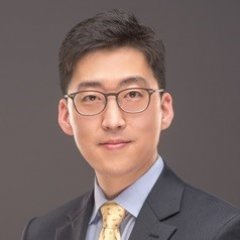Our solution's stage of development:
ResearchOur solution:
Utilizing augmented reality, we make neuro-rehabilitation more accessible and effective for patients living with stroke, phantom limb pain, and other forms of chronic limb pain.
Our pitch:
The problem:
Neurological diseases and long-term disability resulting from it is on the rise due to our aging population. Rehabilitation is the main mode of therapy for patients with neurological disabilities resulting from devastating conditions such as a stroke. The functional recovery patients achieve through rehabilitation therapy directly links to their quality of life and burden on their families and society caring for them. However, these specialized therapies are not equally accessible to all patients. For example in the Boston area, mirror therapy is only offered at Spaulding Rehabilitation Hospital as a publicly advertised therapy program for stroke and amputee patients.
Why our solution will solve the problem:
We make specialized rehabilitation therapies much more accessible through a mobile augmented reality platform. Our current MVP is a mirror box therapy reinvented using augmented reality.
According to a 2012 Cochrane review of mirror therapy, it has proven efficacy in accelerating motor function, quality of life, and chronic pain of stroke patients with stable effects even after 6 months. (http://www.cochrane.org.ezproxy.canberra.edu.au/CD0084...) In 2007, Walter Reed Army Medical Center used mirror therapy to reduce phantom limb pain in war veterans who suffered traumatic limb amputations. (http://www.nejm.org/doi/full/1...)
We believe our augmented reality therapy will accelerate the recovery of neurologically devastated patients.
Our target outcomes:
Patients will directly benefit from our solution by accelerating and unlocking their full potential of neurological recovery. Our therapy system can start in the acute phase of neurological injury and follow the patient to rehabilitation hospitals, nursing facilities, then to patients' home.
We are planning clinical trials of the therapy to prove non-inferiority compared to conventional mirror therapy and show better compliance to the therapy program by patients.
The small form factor and modular therapy sessions allow for personalized therapy that can be deployed at every phase of rehabilitation care either through physician prescription or direct purchase by patients.
How we will measure our progress:
The populations we will benefit initially:
The regions we will benefit initially:
The technologies we employ:
Why our solution is unique:
Our solution is unique because we have the smallest form factor compared to our competitors. This small size of our product allows for extreme portability of our therapy system that can be introduced in the hospital and follow the patient throughout the entire recovery process. Also, our system is capable of collecting patient motion data during each therapy session. This data set will later enable patients to monitor their progress compared to a cohort of similar patients. This would be immensely informative to patients and clinicians.
Why our solution is human-centered:
As augmented reality enabled devices such as Apple ARkit becomes much more widely available to the consumer market, the access to our therapy platform will become much readily available and serve as an on-the-go therapy system for the patients.
Just like how smart phones revolutionized the way the global citizens live their life, we believe augmented reality will have a similar and far-reaching impact on all communities including the underserved as the AR technology gets cheaper and more readily available.
How people will access our solution:
Eventually as all smart phones will have augmented reality and hand tracking technologies integrated to the device, our therapy will become a purely health care software as a service product. The price of the software will be minimal.
Technology-Readiness Level:
6-8 (Demonstration)Our organization:
For-ProfitHow we will sustain our team financially:
Currently, we are bootstrapping and utilizing our own resources to meet our next milestones of setting up clinical trials. Once the clinical trials are planned, we will look for pre-seed / seed stage funding to carry out the trials and maturing the therapy system to the commercial level.
The factors limiting our success:
Cost of clinical trial, much needed partnerships with hospitals and other technology companies, and funding to support the team to work on the solution full time.
How long we have been working on our solution:
Less than 1 yearHow long it will take to develop a pilot:
3-6 monthsHow long it will take to scale beyond our pilot:
12-18 monthsOur expected annual budget:
$1500000
How much of our budget we've secured to date:
$0
We're looking for partners in these fields:
Why we're applying to Solve:
We are applying to Solve to seek help with networking and finding future partnerships to accelerate our efforts in improving patients' quality of life and outcomes in neurological recovery from devastating stroke and chronic pain conditions.
Our current partners:
Julien Bouvier, Mehdi Lefouili, Jingru Guo, Sergio Navarro, and Albert Kwon are the co-founders.
No finalized partners currently, but we are exploring potential partnerships with a few companies.
Solution Team
-
JULIEN BOUVIER-VOLAILLE CTO, AUGMENTX
-
Jingru Guo CXO, AUGMENTx
-
Dr. Albert Kwon M.D. CEO & Co-Founder, AUGMENTx
-
Mehdi Lefouili CPO, AUGMENTx
-
Sergio Navarro CFO, AUGMENTx
to Top





Our Solution
AugmentX